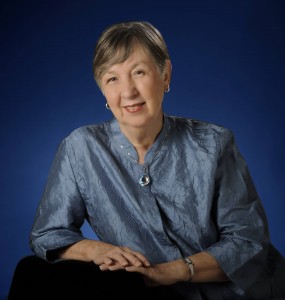Two Perspectives on Optimism, Pessimism, and Pragmatism
Dr. Amit Nagpal, New Delhi, India, and
Dr. Janet Smith Warfield, Florida, USA
_______________________________________________________________________________________
Dr. Amit Nagpal’s Perspective
“Two men look out through the same bars, One sees the mud, the other sees the stars.” ~Frederick LangbridgeFrederick Langbridge believed so, but I think he forgot people like me. I believe you should neither see the mud nor the stars, but rather see what is in the front. Optimism may make us unrealistic; pessimism may depress us (and make us lonely also), so pragmatism is the best policy.
But Optimism Sounds Better
People love optimistic company (and not pragmatic) and (on a lighter note) the most optimistic people end up becoming the best motivational speakers. Nobody wants pessimistic company unless you want to crib and share your pessimism at times. Also, it is easier to be a leader when you are optimistic because people have more faith in your success. Everyone is struggling in the world in some way and we all are looking for someone to motivate and inspire us all the time, more so from our leaders.
Best Case Scenario and Worst Case
Even organizations create two scenarios – best case scenario and worst case scenario. I believe neither the best happens in reality, nor the worst. What usually happens is the average. Or sometimes the best happens, sometimes the worst, and ends up on the whole with the average.
Which is Best?
Who gets the optimum in life, the optimistic, the pessimistic or the pragmatic? Should you be pragmatic for yourself and optimistic sounding with people? Should you expect the best and be prepared for the worst? Should you listen to the eternal optimist-soul or eternal pessimist-mind? Tough questions indeed and the answer is different for each person at a different point of time.
The mind is busy in feasibility studies; the soul is busy in possibility studies. The soul is divinely optimistic, the mind is animally pessimistic. You must move from the mind to the soul, which is a long journey. When you have mastered the law of attraction (or have become fully enlightened and under the influence of the soul), you can be optimistic all the time. Till then, it would be good to be pragmatic.
I can read your mind. You are wondering. “So what do you personally do?”
I ask both soul and mind, and then divide it by two.
_____________________________________________________________________________
Dr Amit Nagpal is a Personal Branding Consultant & Deepest Passion Coach. He is based in New Delhi, India and specializes in personal branding with a holistic touch. His philosophy is, “Enlarge as a Human Being, Excel as a Social Media Being and Evolve as a Personal Brand”
______________________________________________________________________________
Dr. Janet Smith Warfield’s Perspective
“In every block of marble I see a statue as plain as though it stood before me, shaped and perfect in attitude and action. I have only to hew away the rough walls that imprison the lovely apparition to reveal it to the other eyes as mine see it.” ~Michelangelo
Here’s the proverbial half full – half empty glass. Which way do you see it? How does your choice affect your emotions? How does it affect your well-being?
When we see the glass as half empty, we see possibilities that have not yet manifested. The choir director working with a newly-formed chorus sees the possibility of a beautiful, harmonious, balanced chorale, energizing and magnetizing its audience into a larger human symphony. Michelangelo saw a block of marble and envisioned David. Jesus, the Buddha, Lao Tzu, Confucius, Plato, Socrates, and many others saw human suffering and dysfunction and envisioned an all-inclusive humanity connecting needs and resources and co-creating a dynamic, peaceful, respectful, accountable, functional society.
And yet, when we see the glass as half full, aren’t we envisioning the same things? Isn’t the space at the top of the glass simply a metaphor for our unmanifested dreams, hopes, and visions for a better life and world?
How do we manifest these visions together, in harmony? Or don’t we? Do we choose instead to blow ourselves up?
It is All Very Simple
Each of us has only one soul to fix… Each of us has only one heart to heal… Each of us has only one head to clear… our own. But we need all of us. Without one, there is disorder… Without one, there is imperfection… Without one, there is a hole in harmony… no whole. It is all very simple. We all matter. Previously published in Shift: Change Your Words, Change Your World by Dr. Janet Smith Warfield ______________________________________________________________________________
Dr. Janet Smith Warfield serves wisdom-seekers who want understanding and clarity so they can live peaceful, powerful, prosperous lives. Through her unique combination of holistic, creative, right-brain transformational experiences and 22 years of rigorous, left-brain law practice, she has learned how to sculpt words in atypical ways to shift her listeners into experiences beyond words, transforming turmoil into inner peace. For more information, see www.wordsculptures.com, www.wordsculpturespublishing.com www.janetsmithwarfield.com
______________________________________________________________________________
Additional Resources:
http://blog.ted.com/2012/06/28/the-glass-is-half-empty-and-half-full-tedglobal-2012-day-3-recap/ http://uncommonchick.com/glass-half-empty-or-half-full/


 Dr. Amit Nagpal’s Perspective
Dr. Amit Nagpal’s Perspective




Comment